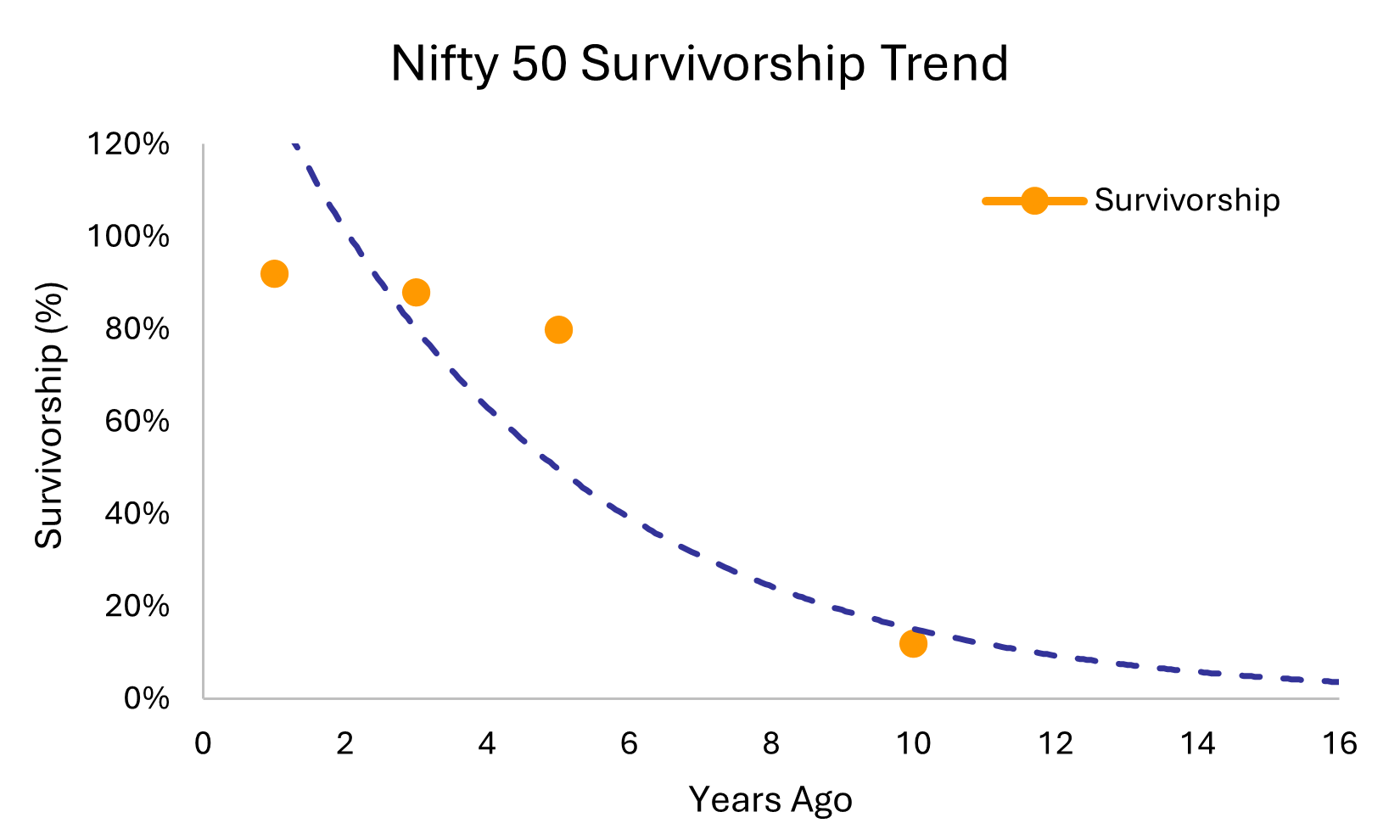Active > Passive.... in India
The Nifty 50 stands as the benchmark for India’s equity market, representing the country’s largest and most liquid companies. For investors, the index serves as a barometer of market health and a preferred vehicle for both passive and active strategies.
However, beneath its apparent stability lies a dynamic and often underappreciated reality: index composition changes frequently, and companies entering the index rarely sustain their past performance.
Survivorship - A Constantly Evolving Index
Historical analysis highlights the transience of index constituents. A review of the Nifty 50 index over the last 10 years shows that:
- 92% of companies from 2024 are still in the index as of 2025.
- Looking back five years to 2020, only 80% remain.
- A decade ago, in 2015, just 12% of those companies are still represented today.

Nifty 50 Survivorship Trend. Source: NSE, data as of 30/06/2025
The data follows a clear exponential decay pattern. Statistically, the index undergoes a half-life of roughly 5-6 years, meaning that half of the current constituents are replaced within that timeframe.
This means by 2030, almost half of today’s Nifty 50 constituents will be replaced. This rapid turnover reflects the dynamic nature of India’s corporate landscape, where emerging sectors and companies consistently displace former market leaders.
The Entry Effect - Performance Peaks Before Inclusion
Beyond survivorship, the performance of companies before and after entering the Nifty 50 reveals further key insight for investors:
- Companies often exhibit exceptional returns in the five years prior to index inclusion, driven by earnings momentum, market optimism, and increasing institutional attention.
- Once included, returns typically decline, as the market has already priced in much of the growth story.

Nifty 50 Entrants - Pre and Post-Entry Index Performance. Source: NSE, data as of 30/06/2025
Across the 2016 to 2020 cohorts, Nifty 50 entrants consistently delivered exceptional returns in the five years leading up to their inclusion, followed by a marked slowdown in performance once they became part of the index.
Implications for Investors – Stay Active
While passive index investing offers broad market exposure, the real opportunity lies with active investors and managers who can anticipate the next wave of Nifty 50 entrants and exit lagging constituents early.
Alpha is most often captured by identifying companies with sustained earnings growth, strong market‑cap expansion, and clear sectoral tailwinds before they enter the index. Sector rotation is also a critical driver - while financials and IT dominate today’s Nifty 50, emerging leaders frequently arise from consumption, manufacturing, and new‑economy sectors.
By positioning ahead of these transitions, active strategies are far better placed to capture the upside that passive funds typically miss.
5 topics
1 stock mentioned
%202.jpg)
%202.jpg)